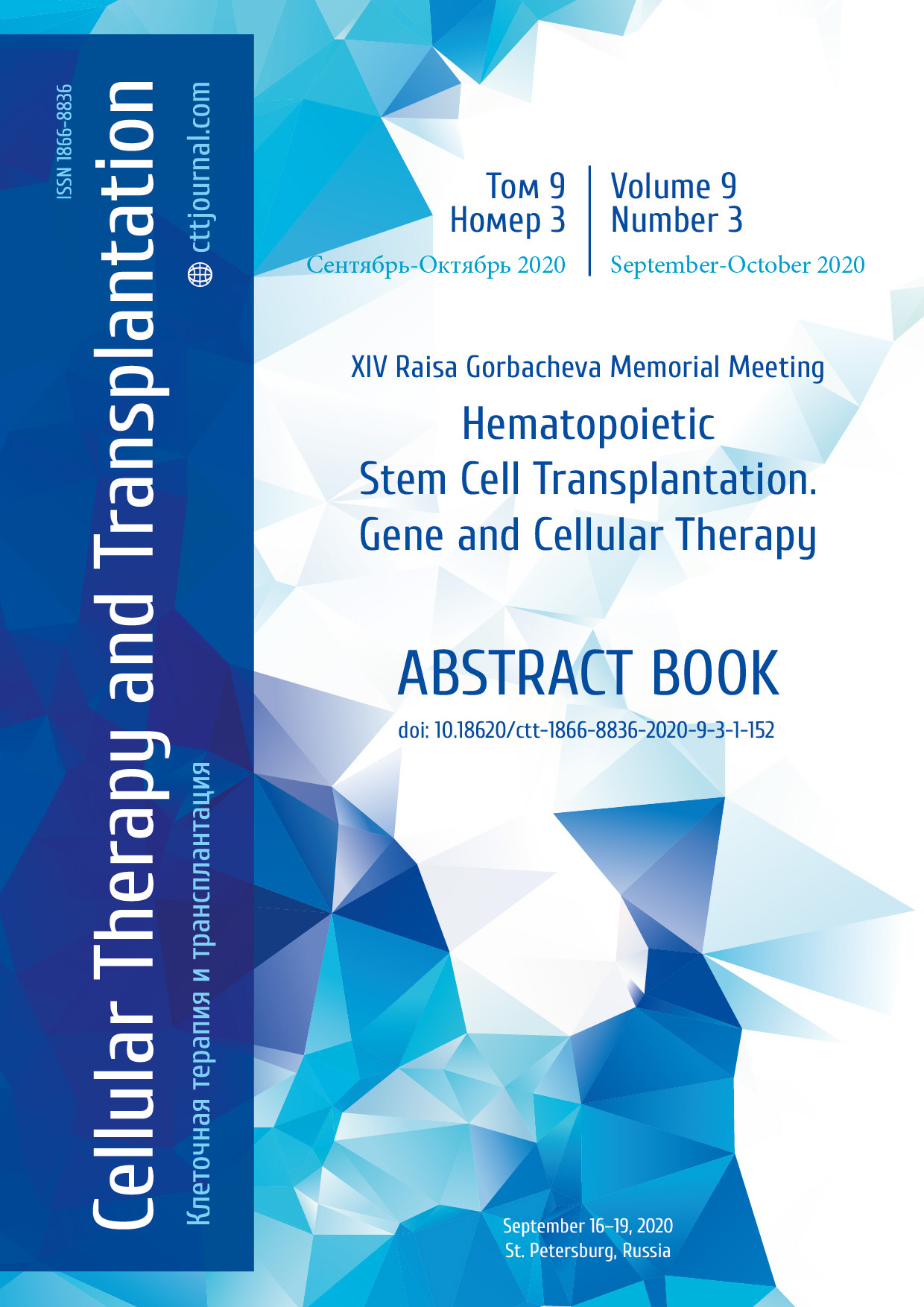OI-01. Cost optimization of allogeneic hematopoietic stem cell transplantation in Russia
Mikhail Yu. Drokov1, Oleg A. Miloserdov2, Irina T. Ibragimova1, Bella V. Biderman1, Yulia V. Sidorova1, Anastasia S. Smotrova1, Vera A. Vasilyeva1, Irina A. Lukianova1, Larisa A. Kuzmina1, Andrey B. Sudarikov1, Tatyana N. Obukhova1, Ekaterina S. Pronina1, Tatyana V. Gaponova1, Tatyana N. Filonova1, Vera V. Troitskaya1, Elena N. Parovichnikova1, Valery G. Savchenko1
1 National Research Center for Hematology, Moscow, Russia
2 V. A. Trapeznikov Institute of Control Sciences, Moscow, Russia
Contact: Dr. Mikhail Yu. Drokov, e-mail: mdrokov@mail.ru
Summary
Introduction
Currently, if a patient with acute myeloid leukemia (AML) does not have valid results needed for cytogenetic and molecular group risk stratification, he is an “absolute candidate” for allogeneic hematopoietic stem cell transplantation (allo-HSCT). At the same time, up to 15% of all AML patients have molecular genetic abnormalities that do not require such a serious intervention as allo-HSC (Döhner et al., 2017)T. Thus, in 15% of patients allo-HSCT could be avoided without harming treatment results (Duarte et al., 2019). Our aim was to assess the economic effect of the organized logistic of biosamples (“day-to-day” delivery) and centralized molecular-genetic diagnostics at the onset of AML.
Materials and methods
For our calculations, the data on AML incidence per 100.000 population in each of the regions of Russia were used, obtained from the book “Malignant neoplasms in Russia in 2017 (morbidity and mortality)” edited by A. D. Kaprin. et al. The population size in each of the regions was obtained from the operational data of RosStat as of January 1, 2020. The annual incidence of AML in the region was calculated as the multiplication of AML case numbers per 100.000 subjects by the total population of the region, being normalized for 100.000. The probability of being diagnosed with AML in particular region was calculated as the ratio of the AML incidence per year in the region to the total number of patients diagnosed with AML around the country. Calculation of the molecular-genetic diagnostics cost, (detection of the fusion genes: CBFB-MYH11A, CBFB-MYH11E, PML-RARA bcr1, PML-RARA bcr2, PML-RARA bcr3, CBFB-MYH11D, RUNX-RUNXT1, determination of the FLT3, NPM1, TP53 genes status, conventional (standard) karyotyping) was performed at the Planning and Economic Department of the National Medical Research Center of Hematology (Russian Health MInistry). The cost of induction therapy (Stage 1), allo-HSCT (Stage 2), and a year of post-transplant follow-up (Stage 3) were taken from the results of a pharmacoeconomic analysis carried out in 2017 on behalf of the Russian Government. Tariffs for the delivery of bio-samples from the regions to Moscow (“day-to-day”) were taken from the price list of one of the international express-courier service. Based on these data, taking into account the likelihood of AML diagnostics in a particular region, the weighted average delivery cost was calculated. The work compared the generally accepted model (M1), in which a patient with AML is an absolute candidate for allo-HSCT, and Stages 1-3 are included in the cost of such treatment, and the model (M2), in which the costs of biomaterial delivery and molecular-genetic analysis, for 85% of patients – the costs of Stages 1-3. For 15% of the cohort, only the Stage 1 costs were calculated.
Results
The result is presented in a graph showing the difference between M1 and M2 models (with cost reduction) and the number of patients. Hence, the annual cost reduction for 100 people is 68.14 million roubles, for 1000 AML cases, 681.4 million roubles, if covering the entire cohort of adult AML patients (about 1.500 people per year, excluding early mortality). This value exceeds 1.022 million rubles (1.022 billion roubles per year).

Figure 1. Dependence of the difference between M1 and M2 (cost reduction) and the number of patients
Conclusion
Organization of biosamples delivery from regions, centralized molecular genetic diagnostics and decision-making on allo-HSCT based on these data will reduce the therapy time for a certain cohort of patients with a favorable prognosis, in whom the results of conventional chemotherapy have acceptable results. All this will make it possible to save significant funds annually (up to 1.022 billion rubles a year), thus providing free hospital facilities for other patients with indications for allo-HSCT.
References
1. Döhner H., Estey E., Grimwade D., et al. Diagnosis and management of AML in adults: 2017 ELN recommendations from an international expert panel. Blood. 2017;129(4):424-47.
2. Duarte R.F., Labopin M., Bader P., et al. Indications for haematopoietic stem cell transplantation for haematological diseases, solid tumours and immune disorders: current practice in Europe, 2019. Bone Marrow Transplant. 2019;54(10):1525-52.
3. Kaprin A.D. Malignant Neoplasms in Russia in 2017 (incidence and mortality). Moscow, 2017 (In Russian).
Keywords
Acute myeloid leukemia, allo-HSCT, cost reduction, pharmacoeconomic modeling.


